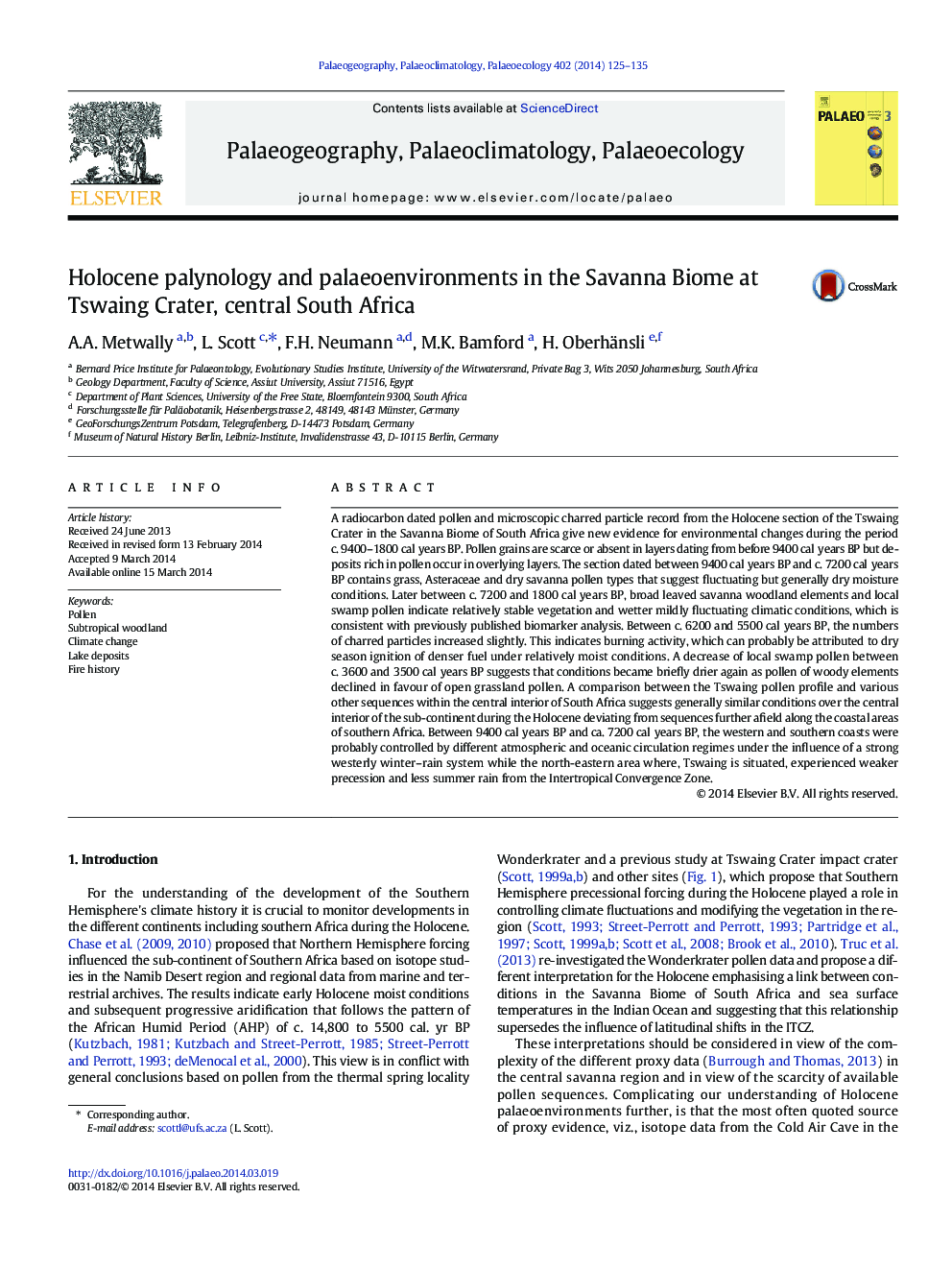| کد مقاله | کد نشریه | سال انتشار | مقاله انگلیسی | نسخه تمام متن |
|---|---|---|---|---|
| 4466268 | 1622188 | 2014 | 11 صفحه PDF | دانلود رایگان |

• Tswaing Crater pollen reflects Holocene environmental changes in South Africa
• A record of Holocene fire history in South African subtropical woodland
• Biomarker data support palynological interpretations at Tswaing Crater
• An improved chronology of the Holocene deposits in Tswaing Crater
• Clues of forcing that controls Holocene climate of Southern Africa
A radiocarbon dated pollen and microscopic charred particle record from the Holocene section of the Tswaing Crater in the Savanna Biome of South Africa give new evidence for environmental changes during the period c. 9400–1800 cal years BP. Pollen grains are scarce or absent in layers dating from before 9400 cal years BP but deposits rich in pollen occur in overlying layers. The section dated between 9400 cal years BP and c. 7200 cal years BP contains grass, Asteraceae and dry savanna pollen types that suggest fluctuating but generally dry moisture conditions. Later between c. 7200 and 1800 cal years BP, broad leaved savanna woodland elements and local swamp pollen indicate relatively stable vegetation and wetter mildly fluctuating climatic conditions, which is consistent with previously published biomarker analysis. Between c. 6200 and 5500 cal years BP, the numbers of charred particles increased slightly. This indicates burning activity, which can probably be attributed to dry season ignition of denser fuel under relatively moist conditions. A decrease of local swamp pollen between c. 3600 and 3500 cal years BP suggests that conditions became briefly drier again as pollen of woody elements declined in favour of open grassland pollen. A comparison between the Tswaing pollen profile and various other sequences within the central interior of South Africa suggests generally similar conditions over the central interior of the sub-continent during the Holocene deviating from sequences further afield along the coastal areas of southern Africa. Between 9400 cal years BP and ca. 7200 cal years BP, the western and southern coasts were probably controlled by different atmospheric and oceanic circulation regimes under the influence of a strong westerly winter–rain system while the north-eastern area where, Tswaing is situated, experienced weaker precession and less summer rain from the Intertropical Convergence Zone.
Journal: Palaeogeography, Palaeoclimatology, Palaeoecology - Volume 402, 15 May 2014, Pages 125–135